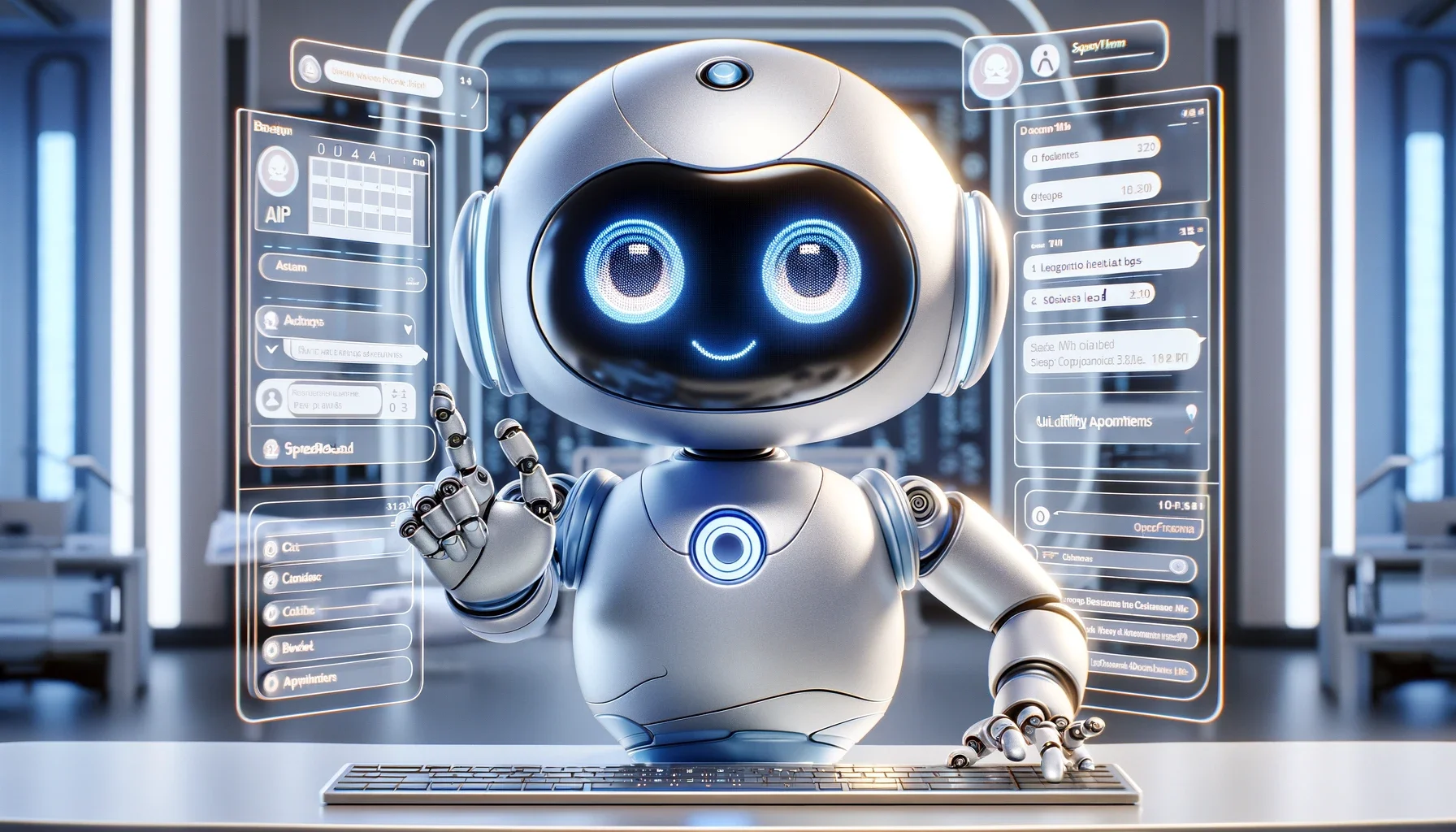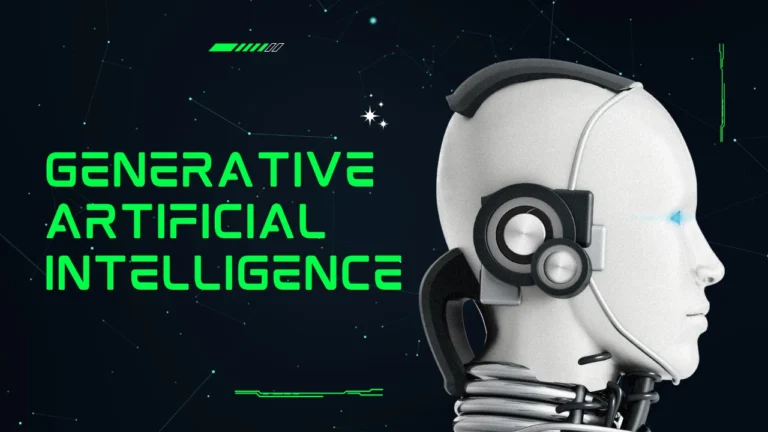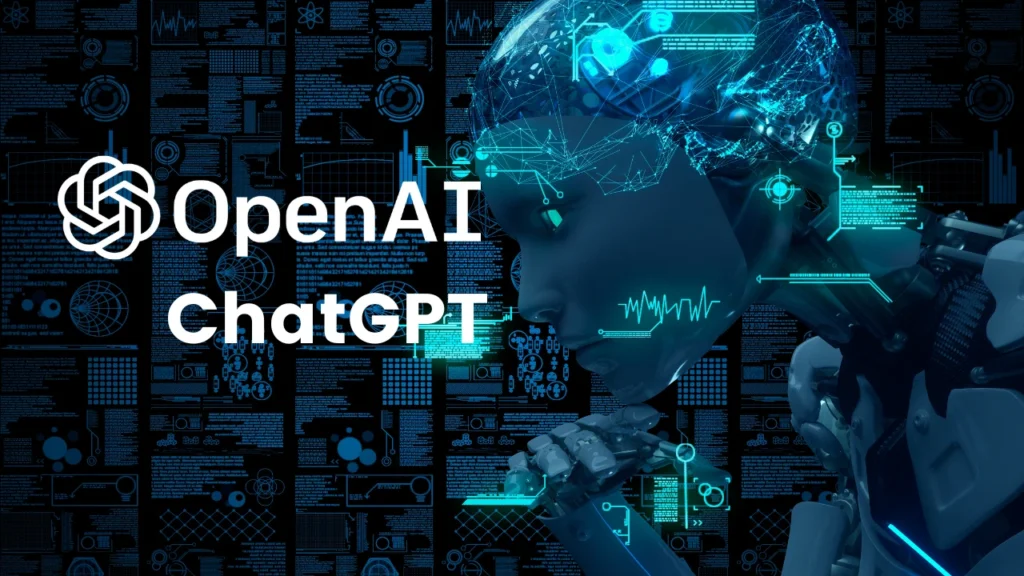
In the rapidly evolving world of artificial intelligence (AI), artificial chat or conversational AI has become a cornerstone of digital interaction. With the development of Chat GPT Online, we are witnessing a transformative period in how we communicate with machines. This article explores the rise of conversational AI, its profound impact on user experience, the future of AI-driven communication, and the societal implications of this technology. Let’s delve into the key takeaways that highlight the potential and challenges of this new era of digital conversation.
Key Takeaways
- Chat GPT Online marks a significant evolution from basic chatbots to advanced systems capable of nuanced understanding and dynamic interactions.
- Enhancements in NLP have enabled AI chat systems to offer personalized experiences and improved customer service, setting new standards in digital communication.
- The future of conversational AI includes the development of multimodal interactions, expanding the ways in which AI can engage with users.
- Conversational AI is blurring the lines between human and machine communication, challenging traditional assumptions about digital conversations.
- Ethical considerations and responsible deployment of AI are crucial as the technology advances to ensure its benefits are maximized while minimizing potential risks.
The Rise of Conversational AI
From Scripted Responses to Dynamic Interactions
The advent of conversational AI has marked a significant departure from the rigid, scripted interactions of the past. Chat GPT Online represents a paradigm shift, where the focus is on creating a fluid and natural conversational experience. Unlike traditional chat systems that relied on pre-defined responses, AI-driven chat interfaces are now capable of understanding context, learning from interactions, and providing personalized responses.
- Early chatbots: Limited to scripted replies
- Conversational AI: Learns and adapts
- Chat GPT Online: Personalizes interactions
The true essence of conversational AI lies in its ability to transform mere transactions into meaningful engagements. Users no longer feel like they are talking to a machine, but rather to an entity that understands and responds with relevance and empathy.
The progression from simple command-based systems to sophisticated AI chat platforms has not only enhanced user satisfaction but also opened up new possibilities for digital communication. As these systems continue to evolve, they promise to become even more integrated into our daily lives, blurring the lines between human and machine interaction.
Chat GPT Online: A Paradigm Shift in Digital Communication
Chat GPT Online has ushered in a transformative era for digital communication, where the interplay between humans and machines reaches new heights of sophistication. This technology transcends the limitations of traditional chatbots, offering a seamless and intuitive conversational experience that closely mirrors human interaction.
- Chat GPT Online understands and generates contextually relevant responses.
- It adapts to user preferences, enhancing personalization.
- The technology is accessible to a wide audience, broadening its impact.
By leveraging the advanced capabilities of the Generative Pre-trained Transformer architecture, Chat GPT Online not only responds to queries but also anticipates needs and maintains the flow of conversation, akin to a human counterpart.
The implications of such a paradigm shift are profound, as Chat GPT Online paves the way for more natural and engaging digital conversations. It is not just a tool but a harbinger of a future where AI-driven communication is indistinguishable from talking to another person.
The Impact of NLP on Conversational AI Development
The integration of Natural Language Processing (NLP) has been a game-changer in the realm of Conversational AI. NLP enables systems to understand and interpret human language, transforming how machines interact with us. This leap forward has been pivotal in creating chatbots and virtual assistants that can engage in more natural and meaningful conversations.
The advancements in NLP have also led to the development of more nuanced AI personalities. These AI entities can now detect sentiment, manage context over the course of a conversation, and even exhibit a sense of humor or empathy. Here’s a brief overview of the capabilities that NLP has brought to Conversational AI:
- Sentiment analysis
- Contextual understanding
- Language generation
- Intent recognition
The quest for conversational intelligence is ongoing, with NLP at the forefront, enabling AI to not only understand and generate text but also to perform actions based on language inputs.
The widespread deployment of AI chat in various applications is a testament to the versatility and robustness that NLP has introduced. From customer service to healthcare, NLP-driven Conversational AI is revolutionizing the way we interact with technology, making it more accessible and human-like.
Enhancing User Experience with AI Chat
Overcoming the Challenges of Traditional Chat Systems
Traditional chat systems often fell short in delivering a seamless conversational experience. Users frequently encountered rigid, pre-programmed responses that failed to address their specific needs or questions. The integration of AI into chat systems has dramatically improved this scenario, enabling more natural and intuitive interactions.
- Understanding user intent: AI chat systems can interpret complex queries more effectively.
- Continuous learning: They adapt and improve over time through machine learning.
- Consistency and availability: AI provides consistent responses and is available 24/7.
The shift towards AI-driven chat solutions marks a significant leap in overcoming the limitations of traditional systems. By leveraging advanced algorithms and vast datasets, AI chatbots can now offer personalized and contextually relevant conversations that were once a distant dream for digital communication platforms.
Personalization and Contextual Understanding in AI Conversations
The advent of AI chat systems has ushered in a new level of personalization in digital interactions. These systems are designed to remember user preferences, past interactions, and personal details, which enables them to tailor conversations to the individual. This capability transforms the user experience, making it more engaging and efficient.
The sophistication of AI-driven personalization means that each user can enjoy a unique conversation that feels both relevant and responsive to their needs.
The table below highlights the key benefits of personalization in AI conversations:
| Benefit | Description |
|---|---|
| Enhanced Engagement | Users are more likely to continue the conversation when the responses are relevant to their interests. |
| Increased Efficiency | Personalized responses can reduce the time users spend explaining their context or history. |
| Customer Satisfaction | Tailored interactions often lead to higher satisfaction as users feel their needs are understood. |
As AI continues to evolve, the depth of contextual understanding and the ability to personalize at scale will only improve, setting a new standard for what users expect from digital communication platforms.
The Role of AI in Customer Service Innovation
The integration of AI into customer service operations marks a significant milestone in the evolution of business communications. RingCentral’s AI portfolio, for instance, includes tools like RingSense for Sales, which leverages AI to analyze interactions and automate follow-ups, enhancing the efficiency of sales teams.
The pragmatic applications of AI in customer service are not just futuristic promises but present-day realities. AI is transforming how we communicate and conduct business, fostering collaboration and ensuring transparent adoption across organizational functions.
- AI-driven tools support agents with pre-interaction insights and post-interaction summaries.
- Conversational AI increases first contact resolution by 20%, reducing the need for multiple interactions.
- AI-powered chatbots provide 24/7 support, improving agent interactions and customer experience.
The role of AI in customer service is about more than just automation; it’s about building a service model that encompasses multiple AI-powered touchpoints, where repetitive queries can be dealt with swiftly and effectively.
The Future of AI-Driven Communication
Multimodal Chat: Beyond Text-Based Conversations
The advent of multimodal chat represents a significant leap forward in the realm of digital communication. AI is no longer confined to text, as it now has the capability to incorporate images, videos, and even gestures into the conversation. This integration of various communication modes promises a more nuanced and immersive conversational experience.
Multimodal capabilities are not just about adding visual or auditory elements; they enable AI to understand and interpret a wider range of human expressions. For example:
- Text Generation: AI can produce text that is contextually relevant and stylistically varied.
- Translation: Advanced models offer translation across multiple modalities, enhancing cross-cultural communication.
- Sentiment Analysis: AI’s ability to discern sentiment adds depth to interactions, recognizing emotions beyond words.
The potential for AI to engage in multimodal conversations opens up a world of possibilities for more expressive and engaging interactions. It’s a step towards a future where digital communication can mirror the richness of face-to-face conversations.
As we explore the capabilities of multimodal AI, it’s clear that the technology is evolving to understand not just what we say, but how we say it. The table below highlights the transformative impact of multimodal communication:
| Feature | Impact on Communication |
|---|---|
| Text Generation | Enhances expressiveness and relevance |
| Translation | Bridges language barriers |
| Sentiment Analysis | Adds emotional intelligence to AI |
The integration of multimodal elements is reshaping the landscape of conversational AI, offering a glimpse into a future where digital conversations are as rich and varied as those we have in person.
The Expanding Applications of Chat GPT Online
The versatility of Chat GPT Online is evident as it permeates various sectors, revolutionizing the way we interact with digital platforms. In customer service, it acts as a tireless virtual assistant, streamlining support by handling inquiries and troubleshooting issues. The education sector benefits from its ability to provide personalized learning, while content creators leverage its generative capabilities for innovative marketing strategies.
Customer Service: Virtual assistance, issue resolution, user guidance
Education: Interactive learning, personalized tutorials, quizzes
Content Creation: Marketing, personalized content, audience engagement
The transformative power of Chat GPT Online lies in its adaptability and the seamless integration into existing digital ecosystems, enhancing user experiences across the board.
As we look to the future, the applications of Chat GPT Online are poised to grow exponentially. The continuous advancements in AI promise to unlock new capabilities, making it an indispensable tool in an ever-increasing array of fields.
Ethical Considerations and Responsible AI Deployment
As conversational AI becomes increasingly integrated into our daily lives, the ethical landscape surrounding its development and deployment demands rigorous scrutiny. One of the primary ethical concerns revolves around the nature of interaction with chatbots, which are designed to engage users in a manner that often blurs the line between human and machine. This raises profound questions about user autonomy and the potential for manipulation.
These are complex issues with no easy answers, but they illustrate the need for thoughtful consideration.
Responsibility and accountability in AI decision-making are also critical. When AI chat systems affect the real world, determining who bears the responsibility for those actions is essential. Is it the AI itself, the developers, or the company deploying the system? Ethical deployment requires a clear framework for accountability.
Transparency is another cornerstone of ethical AI. Users should have the right to know whether they are interacting with a machine or a human, to avoid deception and ensure informed consent. The table below outlines key ethical considerations in AI chatbot development:
| Ethical Consideration | Description |
|---|---|
| User Autonomy | Ensuring chatbots do not manipulate or unduly influence users. |
| Accountability | Assigning responsibility for AI's actions and decisions. |
| Transparency | Clearly communicating the AI nature of the chat system to users. |
| Privacy | Safeguarding user data and respecting consent. |
Addressing these ethical challenges is not just a technical or regulatory issue; it is a societal imperative that requires ongoing dialogue and collaboration among all stakeholders.
Conversational Intelligence: Blurring the Lines

The Human-Like Qualities of Advanced AI Chat Systems
Advanced AI chat systems are increasingly exhibiting human-like qualities that are transforming the way we interact with technology. These systems are not only understanding and responding to queries but also displaying empathy, humor, and the ability to maintain a coherent and contextually relevant conversation over time.
Empathy: Recognizing and responding to user emotions.
Humor: Generating contextually appropriate jokes and witty responses.
Coherence: Maintaining a logical flow in conversations.
Contextual relevance: Understanding the background and nuances of a discussion.
The sophistication of these AI systems lies in their ability to learn from interactions, adapt to user preferences, and provide personalized experiences. As they become more adept at mimicking human conversational patterns, users often find themselves forgetting that they are chatting with a machine.
The ethical and philosophical questions that conversational AI raises are complex and deserving of careful consideration. However, the benefits of conversational intelligence are clear, from improved customer service to personalized learning. With each advancement, we move closer to a world where AI is not just intelligent, but truly conversational.
Challenging Our Assumptions About Digital Conversation
As conversational AI continues to evolve, it is reshaping our understanding of digital conversation. The once clear line between human and machine communication is becoming increasingly blurred, prompting us to reconsider what constitutes a meaningful interaction. This shift is not just technological but also ideological, as it challenges the very assumptions of digital literacy and the socio-technologic shifts that accompany it.
The sophistication of AI chat systems is leading to a new era of conversational intelligence, where the nuances of human dialogue are emulated more closely than ever before.
In the realm of digital conversation, we must now navigate a landscape where AI-driven chat systems are not only ubiquitous but also capable of engaging in context-aware discussions that were once the sole domain of humans. This raises important questions about the nature of communication and the skills required to effectively interact in an increasingly AI-integrated world.
The Societal Impact of Conversational AI
The integration of conversational AI into society has far-reaching implications, transforming how we interact with technology and each other. The democratization of information and services through AI chat systems is one of the most significant societal shifts, making knowledge and assistance more accessible to diverse populations.
Accessibility: AI chat systems can break down language barriers and provide support for individuals with disabilities.
Education: Personalized learning experiences can be tailored to individual needs, potentially revolutionizing the educational landscape.
Healthcare: AI can extend the reach of medical services, offering advice and monitoring that supplement human healthcare providers.
The ethical and philosophical questions that conversational AI raises are complex and deserving of careful consideration. As conversational AI becomes more pervasive, its development and deployment must be guided by ethical principles and a commitment to transparency and accountability.
The societal benefits of conversational AI are clear, yet they come with the responsibility to navigate the ethical terrain they present. As we embrace these technologies, we must also engage in ongoing dialogue about their role in our lives and the values they reflect.
CONCLUSION
As we stand on the brink of a new era in digital communication, the potential of artificial chat systems like Chat GPT Online is undeniable. These AI-driven platforms have not only transformed the way we interact with machines but also opened up a world of possibilities for more nuanced and human-like conversations. The evolution of conversational AI marks a significant milestone in our journey towards creating intelligent, responsive technology that can understand and engage with us on a deeper level. While the future holds great promise, it is essential to navigate this advancement with ethical considerations and a commitment to enhancing human connection. The digital conversation landscape is changing, and with it, our very notions of interaction and intelligence are being reshaped for a world where the line between human and machine becomes increasingly blurred.
FAQ
Chat GPT Online, developed by OpenAI, represents a significant leap forward in conversational AI. Unlike traditional chatbots that relied on scripted responses, Chat GPT Online utilizes advanced natural language processing (NLP) to understand context, infer intent, and engage in dynamic, context-aware conversations that feel more human-like.
Chat GPT Online enhances user experience by providing more coherent and contextually relevant responses. It can grasp nuances in language and adapt to user inputs, making interactions smoother and reducing the frustration associated with misunderstandings in traditional chat systems.
Multimodal chat refers to AI systems that combine text with other forms of communication, such as images, videos, and gestures, to create richer and more expressive conversations. This has the potential to revolutionize communication by making it more engaging and intuitive.
Chat GPT Online plays a pivotal role in customer service by providing real-time, personalized support. Its ability to understand and respond to a wide range of queries can greatly enhance customer satisfaction and streamline service operations.
The ethical considerations include ensuring privacy, preventing misuse, and addressing biases in AI responses. It’s crucial to develop and deploy Chat GPT Online responsibly, with proper oversight to maintain user trust and safety.
Conversational AI is expected to impact society by changing the way we interact with technology, enhancing accessibility for those with disabilities, and potentially displacing certain jobs. However, it also offers opportunities for new kinds of employment and creative expression.
The AI Qualifies Leads & Books Appointments.
Table of Contents

SpeedToLead is an advanced Conversational AI Creation Platform that seamlessly qualifies leads and schedules appointments. With exclusive access to top-tier features including Goal Pilot, bulletproof lead management, and unlimited bots per channel, SpeedToLead accelerates your agency and helps you secure more GoHighLevel© wins.
Company
Open: Mon 8:00 am - 5:00 pm PT
© 2023 Speed To Lead, LLC - All Rights Reserved | Privacy Policy and Terms of Service apply.
Do Not Sell or Share My Personal information | Limit the Use Of My Sensitive Personal Information







